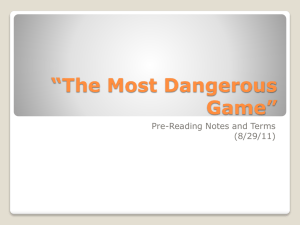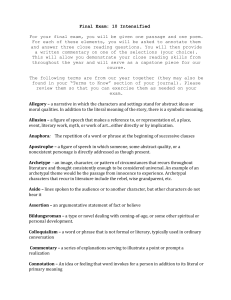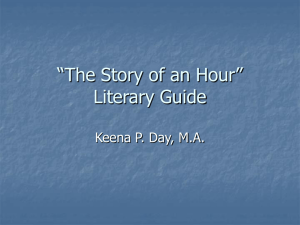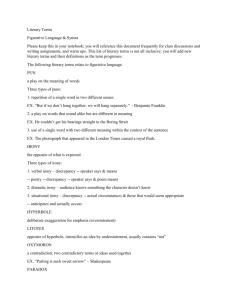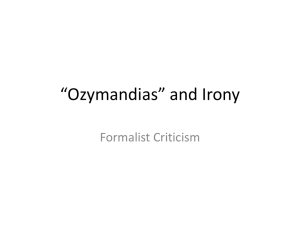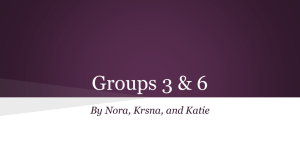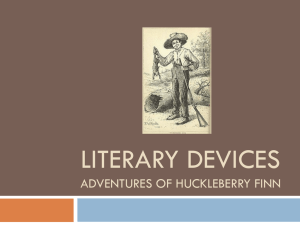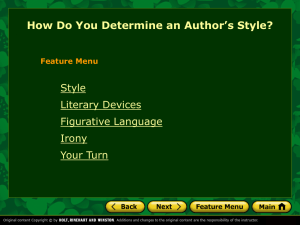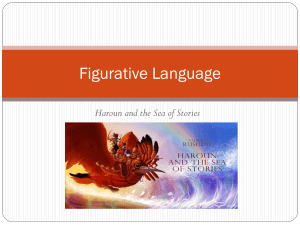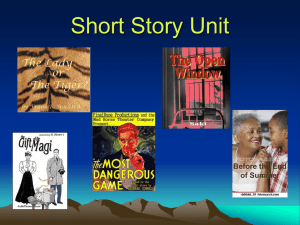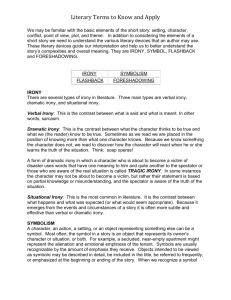A Writer`s Style
advertisement
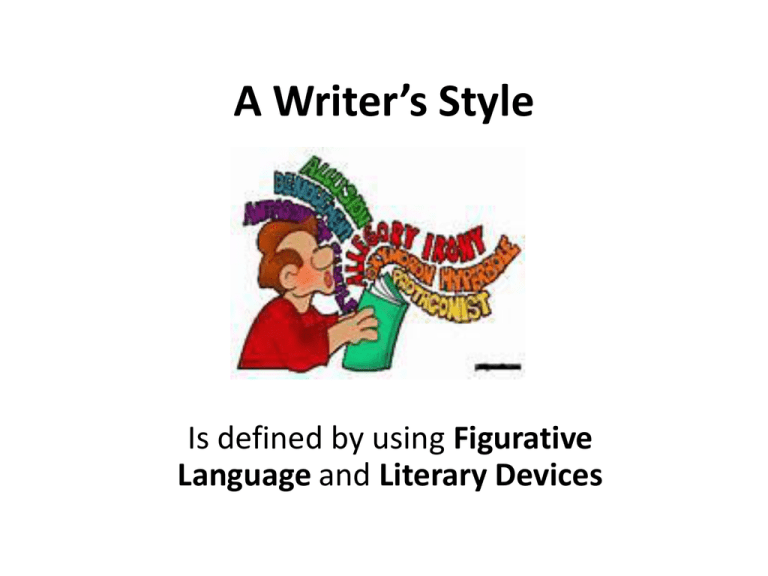
A Writer’s Style Is defined by using Figurative Language and Literary Devices What is Style? The way you walk The way your friend dresses A person’s style is created by how he/she does something. To determine a writer’s style, look at the way he/she uses language. • • • • Realistic dialogue Lighthearted tone Short, conversational sentences Comical, main characters Every writer has a style. Some styles are easier to recognize than others. A writer’s style comes from the choices he/she makes when putting words on a page. • Long word vs. short word? • Simple sentence or complex sentence? Figurative Language: Language used as part of a writer’s style Example: She was a beautiful flower. Common figures of speech writers use: • Metaphor-comparing two unlike things without using a specific word of comparison • Simile-comparing two unlike things using a word of comparison (like, as, or than) • Personification-giving human or lifelike qualities to non-human things. • Idiom-using an expression that means something different from the literal meaning of the words. Similes Compare two unlike objects using words of comparison, such as like, as, or than. Example: Jose was brave as a lion. (Jose is being compared to a lion). Metaphors Compare two unlike things directly, without using words of comparison. Example: Brittany is a delicate rose. (Brittany is being compared to a rose). Personification Gives human or life like qualities or characteristics to non-human things. Example: The leaves raced to the ground. Idioms Expressions that mean something different from the literal meaning of the words. Example: He let the cat out of the bag. (To tell secret information). Literary Devices To determine a writer’s style, look at his/her use of literary devices. Authors use this technique to produce a certain effect. Examples of literary devices include: imagery, irony, symbolism, and dialect Literary Devices: Imagery Language used by writers that creates word pictures and images by using sensory words that appeal to our senses (seeing, hearing, touching, tasking, and smelling). Imagery Helps create pictures in your mind as you read. “He fell down like an old tree falling down in a storm.” Irony The use of words that mean the opposite of what you really think. There are three types of irony: • Verbal irony • Situational irony • Dramatic irony Verbal Irony This type of irony occurs when we say one thing but mean another (sarcasm). Example: “My favorite thing is homework!” (True meaning: I don’t like homework at all) Dramatic Irony This is the contrast between what the character thinks to be true and what the reader knows to be true. Situational Irony It is the contrast (the opposite) between what happens and what was expected. Literary Devices: Symbolism A character, an action, a setting, or an object representing something else is a symbol. Example: A dove symbolizes (stands for) peace. Literary Devices: Dialect A way of speaking, which is characteristic of a certain place or group of people is dialect. Example: “Howdy, y’all” Writers use dialect to give clues about the characters and settings in stories in order to bring them to life.
